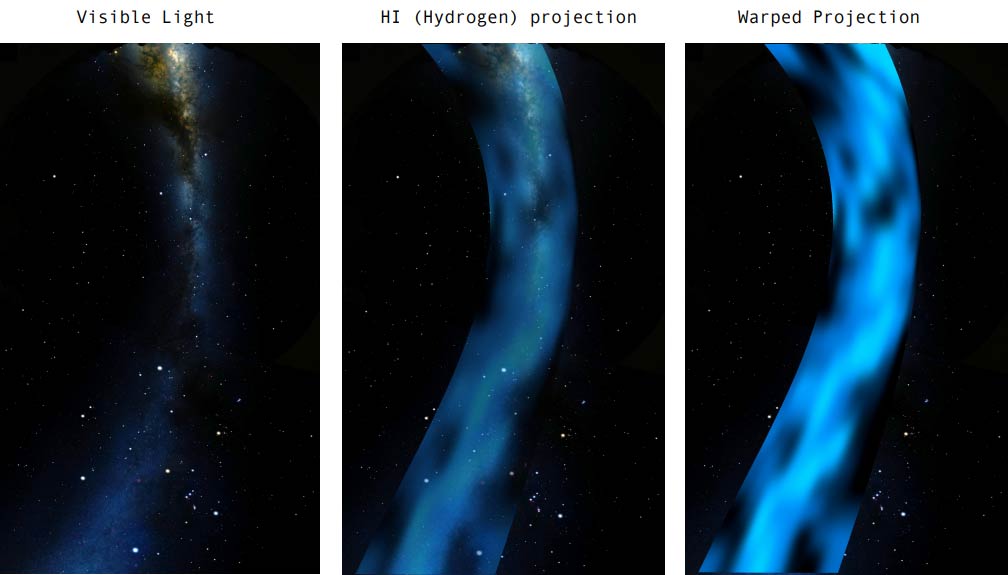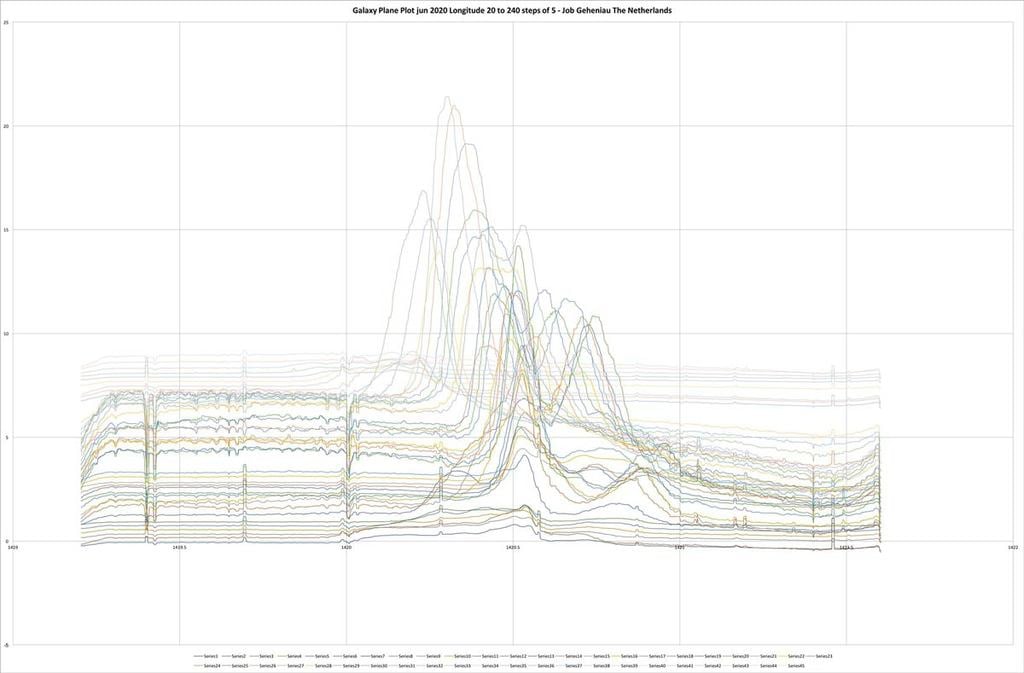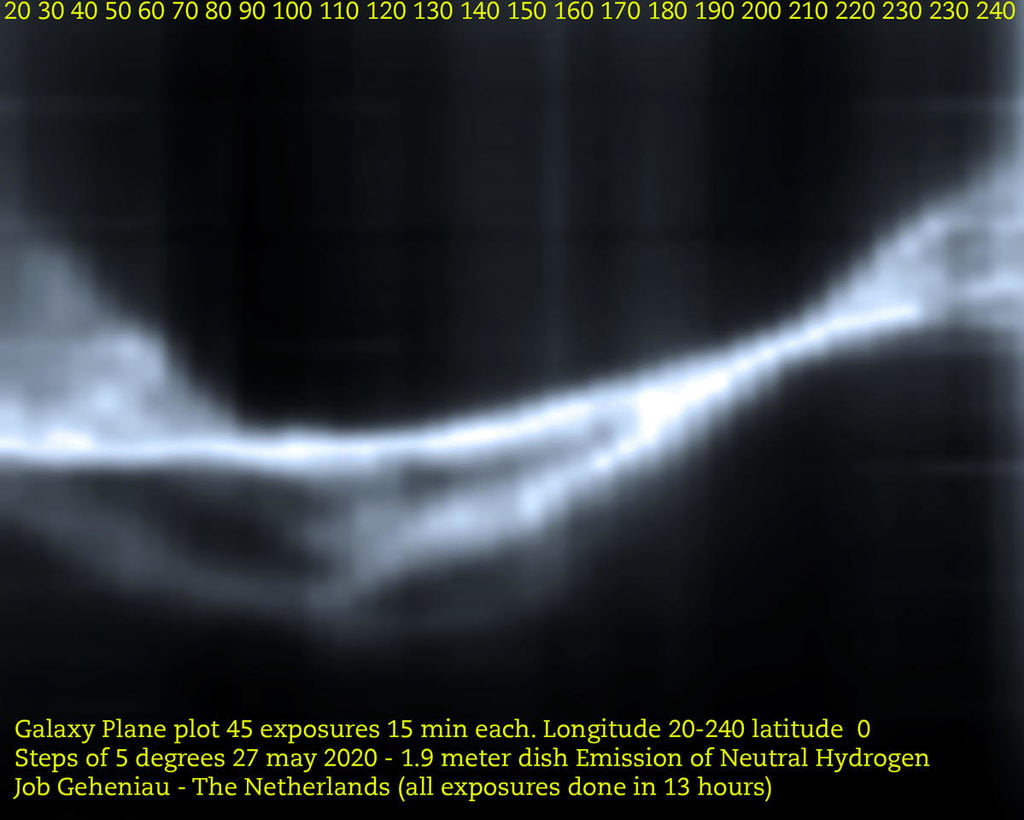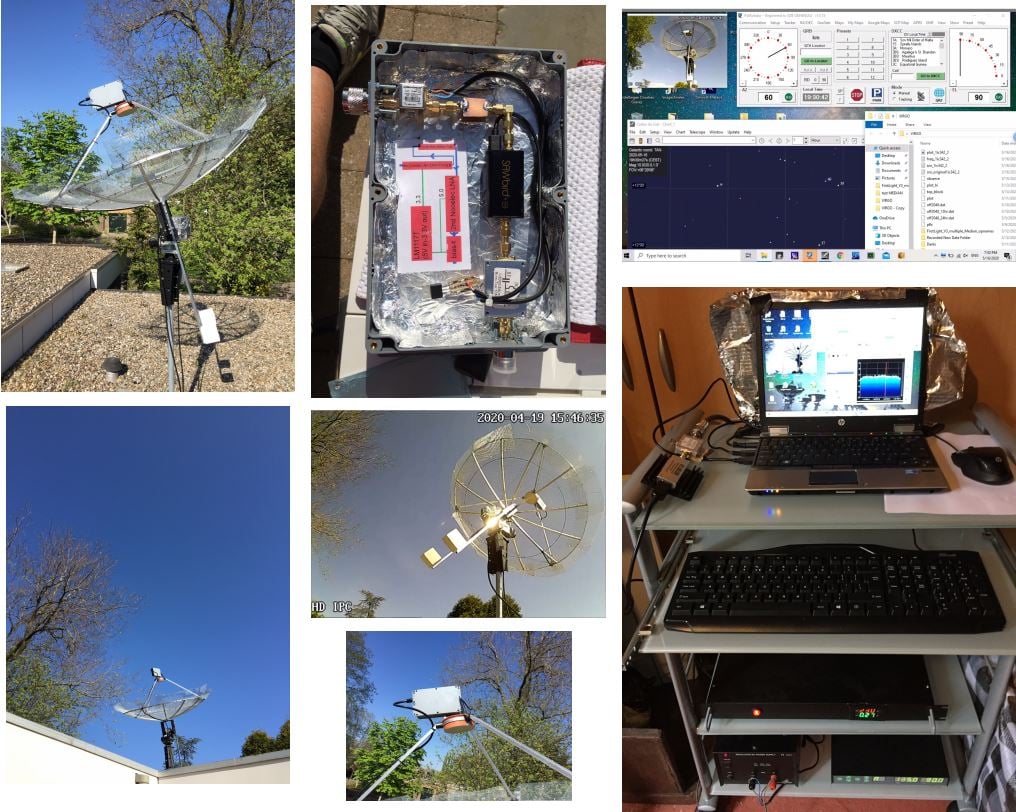Imaging the Milky Way in Neutral Hydrogen with an RTL-SDR
Over on Facebook Job Geheniau has recently been sharing how he's taken an image of our galaxy (the Milky Way) with a radio telescope consisting of a 1.5 meter dish, RTL-SDR and a few filters and LNAs. In the past we've posted several times about others observing the Hydrogen line with an RTL-SDR, and we have a tutorial here showing how to observe it on a budget.
In this case, Job went a step further than just a single measurement. He used a used a motorized dish and RTL-SDR to scan the entire Milky Way over one month, resulting in a full radio image of the galaxy. As his posts and pdf document are on Facebook and not visible to those without Facebook accounts, we asked for permission to reproduce some of them here for all to see. We have also mirrored his PDF file here, which contains more information about his radio telescope, results and setup.
To make a very long story short. After a month of angel patience (and that says something to me) I managed to take a 'picture' of our entire galaxy (galaxy) in neutral hydrogen! I attach some pictures. If you are more interested, please come after this and PDF with explanation. It was a hell of a job I can tell you. But here's the ' picture s' of the house (230 million light years wide) in which we live and in which we all have a big mouth......

For the Scientists among us... a beautiful plot of the Milky Way Graphically explained in neutral hydrogen....... In short, summarized... if you look up on a beautiful summer evening you will see a beautiful galaxy, this is graphically the same but then on a different frequency than the eye can perceive. own dates of course.....


His setup consists of a 1.5m dish, extended to 1.9m with some mesh. A 1420 MHz tuned feed, Mini Circuits ZX6-P33ULN LNA, Bandpass Filter, NooElec SAWBird LNA, Bias-T, RTL-SDR V3, PST Rotator Dish Software, VIRGO software, SDR#, Cartes due Ciel sky chart and a home made netfilter.
He uses a modified version of the VIRGO software to read sky coordinates from a text file, and this points the telescope at each predefined coordinate. He then uses VIRGO to record data for 180 seconds before moving on to the next coordinate. The data is then plotted in Excel, and the highest peak is taken at each coordinate and put back into an 8x21 matrix in excel. Conditional formatting is then used to generate a color gradient resulting in a rough map. Then a Gaussian blur is applied, and it is projected over the Galaxy, resulting in the images above.

In the past we've seen a very similar project performed by Marcus Leech from ccera.ca. However, his measurements use 5 months of observations resulting in much higher resolution data.
The Hydrogen Line is an observable increase in RF power at 1420.4058 MHz created by Hydrogen atoms. It is most easily detected by pointing a directional antenna towards the Milky Way as there are many more hydrogen atoms in our own galaxy. This effect can be used to measure the shape and other properties of our own galaxy.
He did a great job, but the guy has no idea about cosmic distances scale 😉
Ah I see, I typed something wrong, its not 230 million years but 200.000 light years 🙂